You can now preorder my forthcoming novel THE CREEK GIRL (due out Feb. 2025) — at least from Barnes & Noble!
From 4/17-4/19, all preorders are 25% for B&N Rewards members (and 35% off for Premium members), which is a screaming deal.
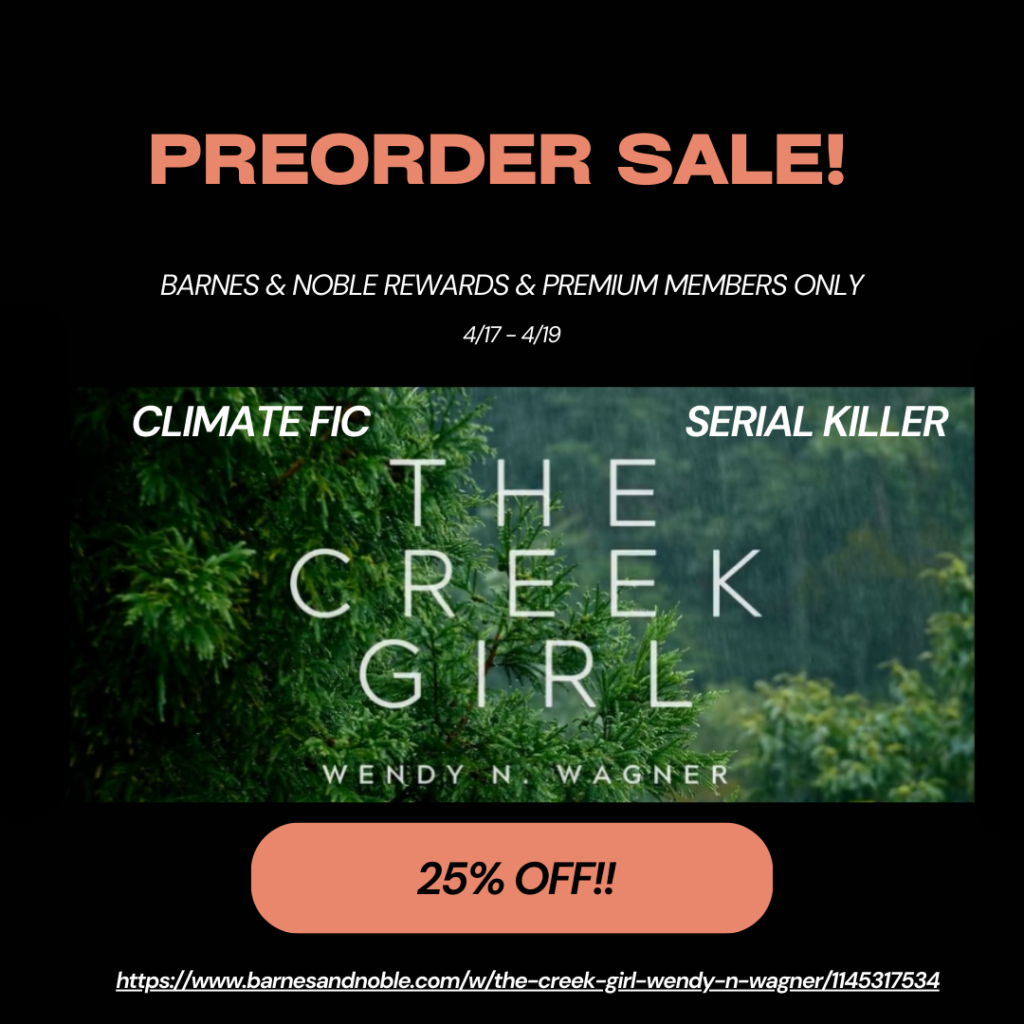
This year has had its challenges! My parents have had a tremendous number of health issues, which has occupied a great deal of my attention. Amazon destroyed its Kindle Periodicals program, through which the majority of my magazine’s subscribers got their copies. The implosion of Twitter meant it became much harder to connect with readers and potential Patreon supporters. And AI has consistently threatened writers and artists across the spectrum, raising tension throughout the creative world.
But it’s also been a fantastic year on many fronts! My first-ever screenplay won first place at the HP Lovecraft Film Festival. I was nominated for a Locus award for Best Editor, and stories in Nightmare were nominated for the Locus, Shirley Jackson, and Nebula awards. I also had a short story nominated for a Shirley Jackson award — my first fiction award nomination. I had a few short stories come out, and my recent SF short “An Infestation of Blue,” had made it to the Nebula Recommended Reading List. I sold a couple of short stories, and I finished the first draft of a novel. I enjoyed working with several great coaching clients, and I didn’t miss a single post for my Patreon supporters. I went on a tremendous road trip with my family (more than 2800 miles!), brought my mom to live with me, and ran a tough trail half marathon where I didn’t even finish in last place. 2023 might not have been my most productive year, but I kept on soldiering along.
Like many others, I’ve turned to Canva to make a cute shareable eligibility image, which is shown below. For more details about the work, check my bibliography page. I have three stories that are eligible for the Nebulas and Hugos, and two horror stories to consider for the Bram Stokers. I’m also extremely proud of my editorial work again this year — both Nightmare and Lightspeed have released terrific work!
I hope you all have had good experiences in 2023 and that you join me in looking to 2024 for good news, great time outdoors, and all the creative energy we could ask for. Let’s make it a terrific year!

I got some very surprising news this week: I am a finalist for the Locus Award for Best Editor!
Just look at this amazing list:
The people on this list edit some of the most exciting and critically important publications on the planet. Several of them are editors who I’ve dreamed of working with my entire career, and some are newer editors whose work is pushing the industry to new and thrilling heights. I don’t know how my name can possibly belong up there with theirs, but it is an incredible honor.
Please note: Every editor is different and has different experiences. This note is not about all magazines and all submissions and all genres. It is about me and how I edit at Nightmare Magazine.
Currently at Nightmare Magazine, I use two form rejections for prose submissions. They look like this:
Default:
Thanks for submitting “Submission Title,” but I’m going to pass on it. Best of luck to you placing this one elsewhere, and thanks again for sending it my way.
#2 on the pull-down menu:
Thanks for submitting “Submission Title,” but I’m going to pass on it. We had a good time reading it, but it’s not quite the right fit for me right now. Best of luck to you placing this one elsewhere, and thanks again for sending it my way. I look forward to seeing your next submission!
In general, I try to select the second letter for stories that were read more than once, like if a submission reader bumped the story into my submission pile, or if I started reading the story and thought it could be interesting and saved it for a closer read later. (That said, the first letter is the default letter, so if you get it, there’s always a chance that I mis-clicked on the pull-down menu. It has happened several times.)
I have been working on these letters since John Joseph Adams set me up to accept or reject stories in the submissions engine in mid-2020, and there’s a chance they could still change. I have strongly considered including a link to a picture of a dog hugging a capybara or something equally cute, or maybe a link to a clip from The Big Lebowski, when The Dude says “That’s just, like, your opinion, man,” which is what I say whenever one of my stories gets rejected. At any rate, the letters are a work in progress, and I’ve put a lot of thought into them.
Sometimes I do personalize these letters a little. If I am sending a letter to someone whose name I recognize from previous submissions, or we’ve worked together before, or we get along really well on Twitter, I might put in a note like “I’m so glad I got to see a new story from you!” But that’s about the biggest change I’ll make. It’s not really what you’d call a “personal rejection.”
Here’s a list of all the reasons I don’t send personal rejections (in no particular order):
So stop worrying about what the rejection letter says about you. Rejection is always about the editor and whatever they’re feeling or needing at that moment.
Now get out there and write your next story!
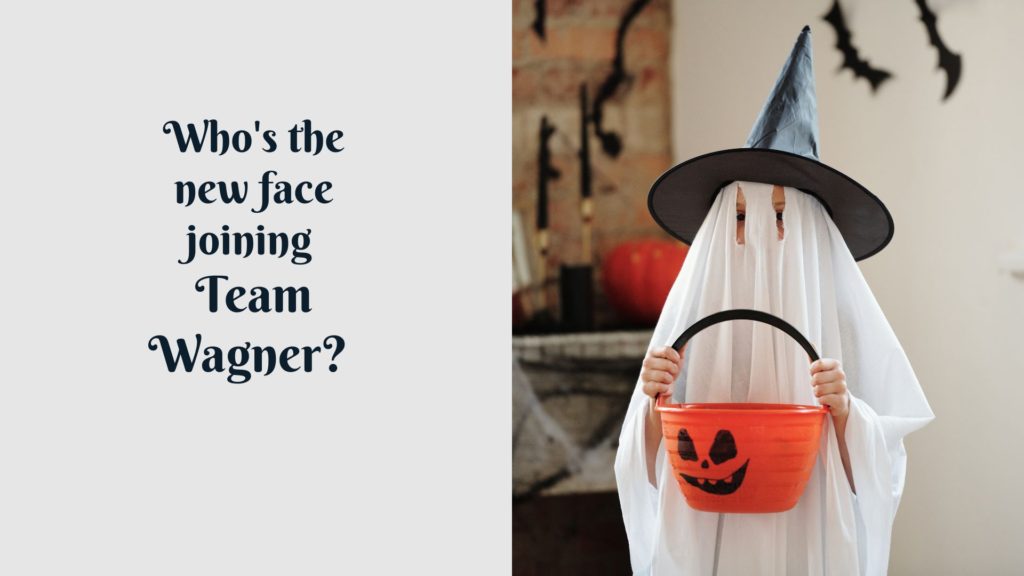
Delighted to announce that I’ve signed with agent Lane Heymont of The Tobias Literary Agency!
It turns out that Lane is just as excited about horror as I am (and that’s saying something!), so I’m thrilled and delighted to get to work together. Hopefully we’ll be able to usher lots of slimy, spooky, and all-around weird stuff into the world!
Horror Oasis hosted the reveal for my upcoming novel The Deer Kings (due out 8/27 from JournalStone). Want to take a peek????
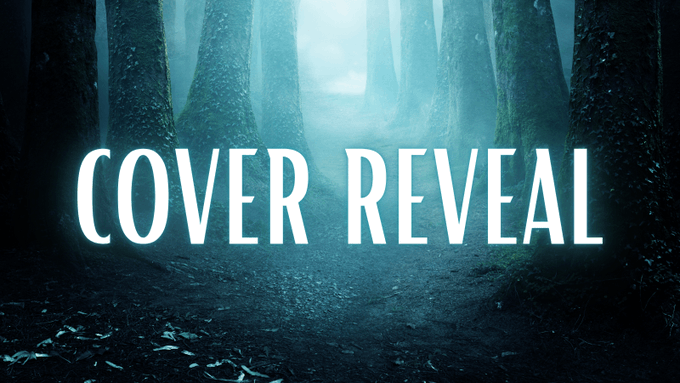
So the other day, my editor at Oregon Humanities emailed me this:
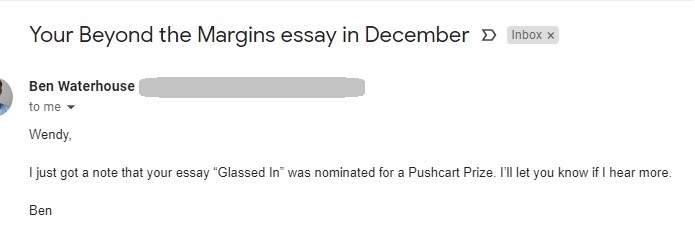
And while I know there are thousands of Pushcart nominations every year, I just about jumped out of my chair for joy!
I love reading and writing nonfiction, especially about nature, so to get this little affirmation about my nature writing really felt great. Plus, I really care about being a pedestrian advocate, so I’m doubly happy.
If you’d like to read “Glassed In,” you can find it on the Oregon Humanities website.
This morning the automated system emailed to let me know that my roundtable conversation with John Joseph Adams about working at Nightmare, reading and editing horror, and other fun stuff went live at the magazine. First I got excited, because we had a great time working on this interview and I’m really excited to share it with people.
And then I got teary.
If you know me at all, you’re not surprised. I tear up for anything touching, sweet, or more emotionally stimulating than a Hallmark card (and let’s face it, some Hallmark cards are dangerously touching). And this interview is all of those things. To me, it’s like that moment in a relay race where one runner hands off the baton to the next.
I’ve been working with John Joseph Adams for more than a decade, on and off. Before I ever became his editorial assistant, I was a fan of his work, so working for him was pretty intimidating. Honestly, sometimes it’s still sometimes a little intimidating! John has such a fine mind and great instincts, and they’ve made him one of the best in the business. I’ve learned so much working with him over the years. I admire him so much.
It’s scary to think that next week it’ll be my name on the cover of Nightmare–scary because JJA has built a tremendous publication that thousands of readers know and love. I don’t want to let them–or him!–down.
But it’s also incredibly exciting. I am SO PROUD of my first issue! I love the stories and the poem, our first ever (well, first in regular issues–we included poetry in the Queers Destroy Horror! special issue). The cover artwork (art directed by Grace Legault) is rad. “The H Word” column is thought-provoking, and the interview is with the delightful Hailey Piper.
So yes, this week I’m tearing up for JJA’s last issue. Next week? I’ll be tearing up for my first. I hope you’ll check it out!
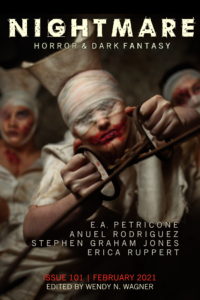
2017 was a mixed sort of bag. On one hand, I did a lot of exciting research, outlined a number of projects, and started some really good writing projects. On the other hand, I only managed to finish two short stories and a sprinkling of poems. However, I am extremely proud of my work at Lightspeed and Nightmare this year, where I’ve taken the helm on the nonfiction department. I am particularly proud of the work we’ve doing at Nightmare, where my nonfiction writers have been digging deeply into the tropes and themes of the horror genre.
Book tour this summer was an absolute blast! I really enjoyed chatting with the Clarion West class of 2017, and my readings throughout the region were beyond fun. I loved connecting with people who love reading just as much as I do. And I am extremely grateful for the days I got to spend with Spencer Ellsworth, the best book tour buddy a gal could ask for!
For those interested in awards nominations, my novel An Oath of Dogs definitely qualifies for the Hugo and Nebula.
I had a number of short stories come out this year: “The Burnt Sugar Stench,” from the anthology Tales from a Talking Board; “Buffalo Jump,” from the tie-in anthology Predator: If It Bleeds; “The Writing Wall,” from the Lovecraftian anthology Ride the Star Wind; “With Perfect Clarity,” from genre fiction magazine GigaNotoSaurus; and “Drift Right,” from the podcast Pseudopod.
On the food front, my garden didn’t produce particularly well this year. However, we saw a dramatic uptick in the bird and squirrel population! (Hmmn … I wonder if there might be a connection between those two events?) It’s been wonderful watching all the creatures thriving outside my back windows.
2018 promises lots of opportunities and challenges. I look forward to continuing my Poetry Form a Week Challenge, and I can’t wait for March, when I get to teach this awesome workshop in Seattle. Plus, all the outlining and research I’ve been doing should lead to some major writing excitement!
Jennifer Willis is one of my best friends; she’s also a terrific writer who helped beta-read An Oath of Dogs. Jennifer knows how much I love to snack while I’m writing, so she gave me a few recipes. They were so great I wanted to make sure to share them with everyone!
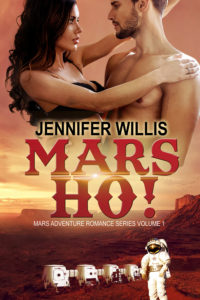 Like me, Jennifer’s got a new book out. Hers is the spicy, funny science fiction romance Mars Ho!, which combines reality tv shenanigans with a lot of in-depth research on what it takes to send people to Mars. It’s my recommended beach reading!
Like me, Jennifer’s got a new book out. Hers is the spicy, funny science fiction romance Mars Ho!, which combines reality tv shenanigans with a lot of in-depth research on what it takes to send people to Mars. It’s my recommended beach reading!
I have a tendency to snack when I’m writing — especially if I’m not doing a timed writing session, like a pomodoro — and my snacking habits over the years haven’t always been the healthiest. I’m looking at you, Goldfish crackers. Also, not all of my favorite snack foods are appropriate for writing productivity. In case you’re wondering, salsa and keyboards do not play nicely together.
So I’ve gotten a little creative in the kitchen to satisfy my snacking urge while also keeping myself fit and focused. Note that Wendy Wagner’s roasted garbanzo beans have been an important mainstay of our writing sessions, and you should absolutely give those a try, too.
The first of the goodies I’ll share here is a blueberry kale smoothie. Don’t look at me like that! Kale and blueberries absolutely go together. My sister surprised me with a Nutri Ninja last December and the blueberry-kale concoction has been one of my more successful experiments. A regular blender would also work, so you don’t need fancy equipment.
Ingredients*:
(* I’ll go ahead and admit that when I’m cooking, I rarely measure anything.)
Frozen blueberries: about 2 cups
Kale: 1 leaf (minus the stem)
Water: about 1 cup
Agave/honey: to taste
Note: you can use fruit juice instead of water, and then skip the sweetener. Cocoa powder also makes for a yummy addition.
Blend this all together. Drink it. Easy.
The second snack secret I’ll share is one that became quite popular with my Call of Cthulhu RPG group. It’s homemade kettle corn. This one probably falls in the “not as bad as real junk food” category and is also my go-to during football season. I use a pretty beat-up Stir Crazy to make mine, but I’ve also had success using an old pot for popping.
Ingredients:
(Again, sorry I’m bad with measurements. Use your best judgment)
Coconut oil: about 1 tablespoon
Popcorn kernels: six handfuls (I prefer white popcorn to yellow, but either will work)
Sugar: a bit less than half a tablespoon (use however much you think you’d like)
Salt: to taste.
Heat the oil in the Stir Crazy or pot. Combine the un-popped kernels with the sugar in a separate container. I sometimes add a little curry, cayenne, and/or paprika to the mix. Once the oil has melted, add the kernels and sugar simultaneously and make sure everything gets spread out. Wait for everything to pop; if you’re using a pot, shake it occasionally to ensure even heating and prevent burning while the corn is popping. As the popping frenzy slows down, remove from heat, transfer your kettle corn to a serving bowl, and add salt to taste.
If you have leftovers, you can enjoy the kettle corn for another day or two past “popping day.” Just zap it in the microwave for about fifteen seconds first.
 An admitted sci-fi nerd and urban fantasy fan, Jennifer Willis is the author of the Valhalla urban fantasy series and the MARS science fiction romance series. When she’s not hiking, knitting, baking, star-gazing, or reading like a fiend, she spends her time bringing enchantment to the world. She is also the writer behind the Northwest Love Stories feature in The Oregonian and has a byline in the BASF award-winning Women Destroy Science Fiction! from Lightspeed.
An admitted sci-fi nerd and urban fantasy fan, Jennifer Willis is the author of the Valhalla urban fantasy series and the MARS science fiction romance series. When she’s not hiking, knitting, baking, star-gazing, or reading like a fiend, she spends her time bringing enchantment to the world. She is also the writer behind the Northwest Love Stories feature in The Oregonian and has a byline in the BASF award-winning Women Destroy Science Fiction! from Lightspeed.
Proudly powered by WordPress
Theme: Esquire by Matthew Buchanan.